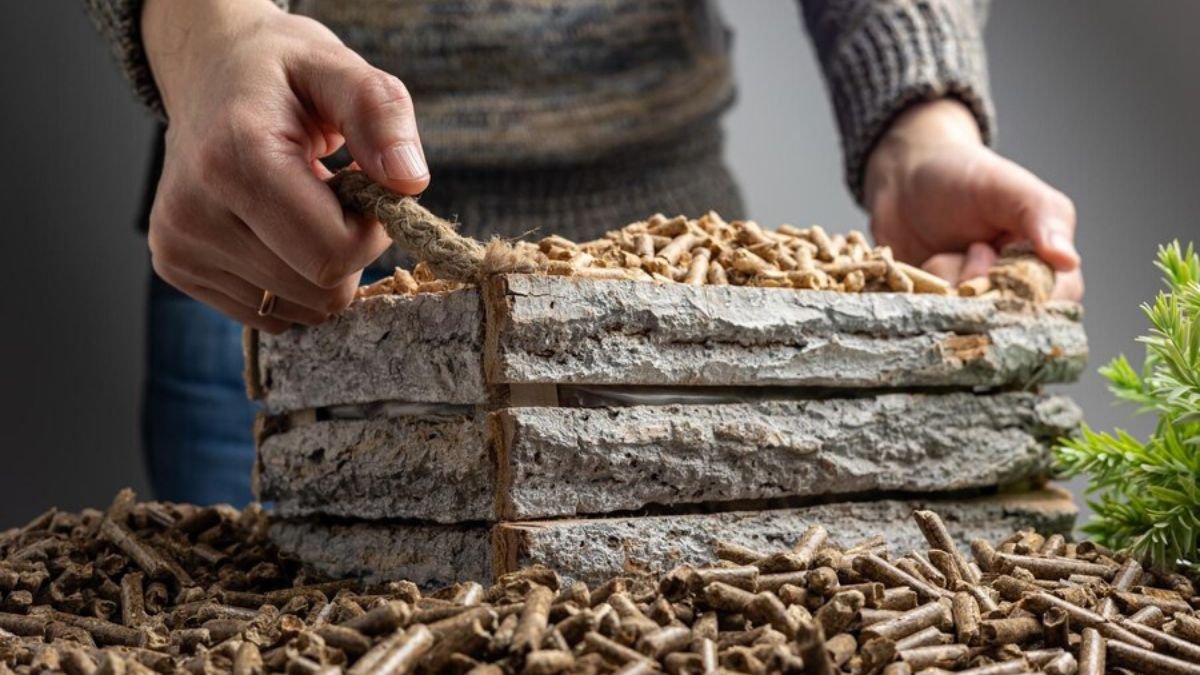Pelletierung, or pelletizing, is an increasingly important process in many industries. It involves the transformation of fine particulate matter into small, solid, and uniform pellets through various mechanical, thermal, and chemical methods. These pellets, typically cylindrical or spherical, are used in a wide range of applications, from fuel production to agriculture and metallurgy.
The rise in pelletizing technology has paralleled growing environmental concerns, particularly about waste reduction and energy efficiency. This process provides a sustainable way to manage and utilize waste materials, while also creating valuable products that serve industries worldwide. By the end of this guide, you will have a clear understanding of how pelletizing works, its benefits, and the different industries that rely on this technology.
What is Pelletierung?
Pelletierung is a method of compressing or molding a material into the shape of a pellet. It originated in industries that dealt with materials in fine powder or granular form, which often caused handling issues or dust hazards. By converting these materials into pellets, they became easier to manage, store, and transport.
Pelletizing typically involves agglomerating fine particles using heat, pressure, or additives. The raw material is fed into a pelletizer, where it is subjected to force until it binds together. This creates solid pellets that are consistent in size and shape, ensuring that they can be used effectively in subsequent processes.
The Science Behind Pelletizing
At its core, pelletizing is a form of particle size enlargement. The process typically involves three key stages: agglomeration, compaction, and final shaping. These stages depend on physical and chemical factors that influence pellet quality, such as moisture content, temperature, and binder use.
The agglomeration process starts by feeding raw materials into a pelletizer, where centrifugal or mechanical forces help form loose aggregates. Moisture or binders may be added to assist in forming these aggregates. Once the particles are sufficiently bound together, they undergo compaction. During this stage, mechanical pressure compresses the material, ensuring that it reaches the required density. Finally, the pellets are shaped into uniform sizes, often through die extrusion or similar methods.
Benefits of Pelletierung
Pelletizing offers numerous advantages, making it the go-to solution for many industries. Some of the most significant benefits include:
- Efficiency in Transportation: Pellets are denser and more uniform than raw materials in powdered or granular form. This makes them easier and more cost-effective to transport.
- Improved Handling: Dust from fine materials can pose significant health risks and lead to product loss. Pelletizing reduces dust production and improves overall safety.
- Consistent Quality: Pellets ensure consistent performance in various applications, as they are uniform in size, shape, and composition.
- Waste Reduction: Many industries use pelletizing to repurpose waste materials, turning them into valuable products. This contributes to circular economy initiatives and sustainability efforts.
- Energy Efficiency: Pelletizing can improve the combustion characteristics of biofuels, leading to more efficient energy use.
Applications of Pelletierung
Pelletizing is utilized across a range of industries. While its applications are incredibly diverse, some of the key areas include:
- Energy Sector: Pelletizing biomass materials such as wood, agricultural residues, and energy crops creates biofuels that are used for heating and electricity generation.
- Agriculture: Animal feed and fertilizers are often pelletized to ensure uniform distribution of nutrients.
- Metallurgy: In the metallurgical industry, iron ore, and other metal powders are pelletized to improve smelting efficiency and reduce waste.
- Waste Management: Various waste materials, including plastics and biomass, are pelletized to create reusable products, reducing landfill contributions.
Also Read: Senjata 4D: Unlocking Winning Strategies in Togel
Pelletizing vs. Briquetting
Both pelletizing and briquetting are methods of compressing materials for easier use and handling, but they differ significantly in their end products. While pelletizing creates small, cylindrical pellets, briquetting forms larger blocks or briquettes. Pellets are often preferred for applications requiring precision and uniformity, such as energy production, where consistency in combustion is crucial. Briquettes, on the other hand, are better suited for bulk applications where size is less important.
Materials Used in Pelletierung
Pelletizing can be applied to a wide range of materials, depending on the intended application. Some of the most common materials include:
- Biomass: Wood, agricultural residues, and other organic materials are pelletized for use as biofuels.
- Metals: Metal ores and powders are pelletized to facilitate processing in furnaces or kilns.
- Chemicals: Certain chemical compounds are pelletized for ease of handling in manufacturing processes.
- Feedstocks: Pelletized animal feed ensures uniform nutrition distribution and easier transport.
Each material requires different conditions during the pelletizing process, such as specific pressure, temperature, and moisture levels.
Conclusion
Pelletierung is an innovative and essential process that continues to drive efficiency, sustainability, and cost-effectiveness across a variety of industries. From bioenergy production to waste management, agriculture, and metallurgy, the ability to compress fine materials into dense, uniform pellets has revolutionized how resources are handled and used. The widespread adoption of this technology highlights its immense value, especially in the face of growing environmental challenges and the need for sustainable resource management.
The benefits of pelletizing, such as improved transportation efficiency, reduced waste, and enhanced product quality, make it a critical tool for industries aiming to reduce costs and minimize environmental impacts. With advancements in pelletizing equipment and techniques, the future of this process promises even greater innovation, helping businesses meet rising demands for energy efficiency, environmental responsibility, and high-quality products.
As technology evolves, pelletizing is expected to play an even more crucial role in industries such as bioenergy, agriculture, and metallurgy. Companies looking to improve operational efficiency, reduce environmental impact, and generate high-quality products will continue to find pelletizing a valuable solution.
FAQs
How does pelletizing reduce environmental impact?
Pelletizing helps reduce environmental impact by transforming waste materials into valuable products, reducing the need for landfill space, and enabling the efficient use of resources. For example, in the bioenergy sector, pelletizing biomass waste reduces greenhouse gas emissions by providing a cleaner, more sustainable alternative to fossil fuels. In agriculture, it helps minimize waste by converting residues into nutrient-rich animal feed or fertilizers.
What are the most common materials used in pelletizing?
Common materials used in pelletizing include biomass (such as wood chips, straw, and agricultural residues), iron ore, metal powders, animal feed, fertilizers, and certain chemical compounds. The choice of material depends on the industry and the intended use of the pellets. Biomass pellets are popular in the energy sector, while metal pellets are essential in metallurgy.
What equipment is needed for industrial pelletizing?
Industrial pelletizing requires specialized machinery such as pellet mills, ring die or flat die pelletizers, drum pelletizers, and extruders. These machines are designed to compress raw materials into small, dense pellets through mechanical, thermal, or chemical means. Additional equipment like dryers, coolers, and binders may be required depending on the specific process and material being used.
How does pellet quality affect its industrial application?
Pellet quality is critical for industrial applications, as poor-quality pellets can result in inefficient processes, equipment damage, and product inconsistency. High-quality pellets are uniform in size, have the right density, and are durable enough to withstand handling and transportation. For example, in energy production, high-quality biomass pellets ensure consistent combustion and energy output.
What are the challenges faced during the pelletizing process?
The pelletizing process can face several challenges, including maintaining consistent moisture content, achieving the correct temperature and pressure, and selecting appropriate binders. Other potential issues include pellet durability, dust formation, and the risk of equipment wear and tear. Addressing these challenges often requires fine-tuning the process and ensuring that the right equipment is used for the specific material being pelletized.
Is pelletizing cost-effective for small businesses?
Yes, pelletizing can be cost-effective for small businesses, especially those looking to repurpose waste materials or improve the handling of their products. While the initial investment in equipment can be significant, the long-term benefits, such as reduced transportation costs, waste reduction, and improved product quality, often outweigh the expenses. Small businesses can also explore smaller-scale pelletizing systems designed for lower production volumes. Pelletierung continues to offer a wide range of benefits and applications, making it an integral process for industries focused on sustainability, efficiency, and resource management. Whether you’re in energy, agriculture, or metallurgy, pelletizing can provide a valuable solution to improve your operational outcomes and environmental footprint.





